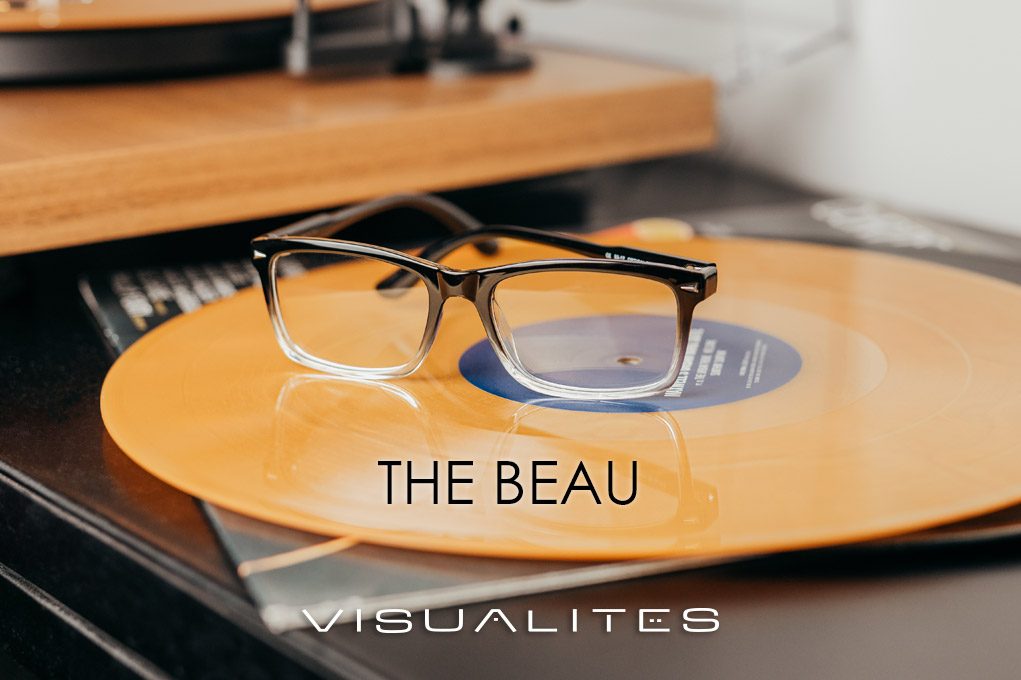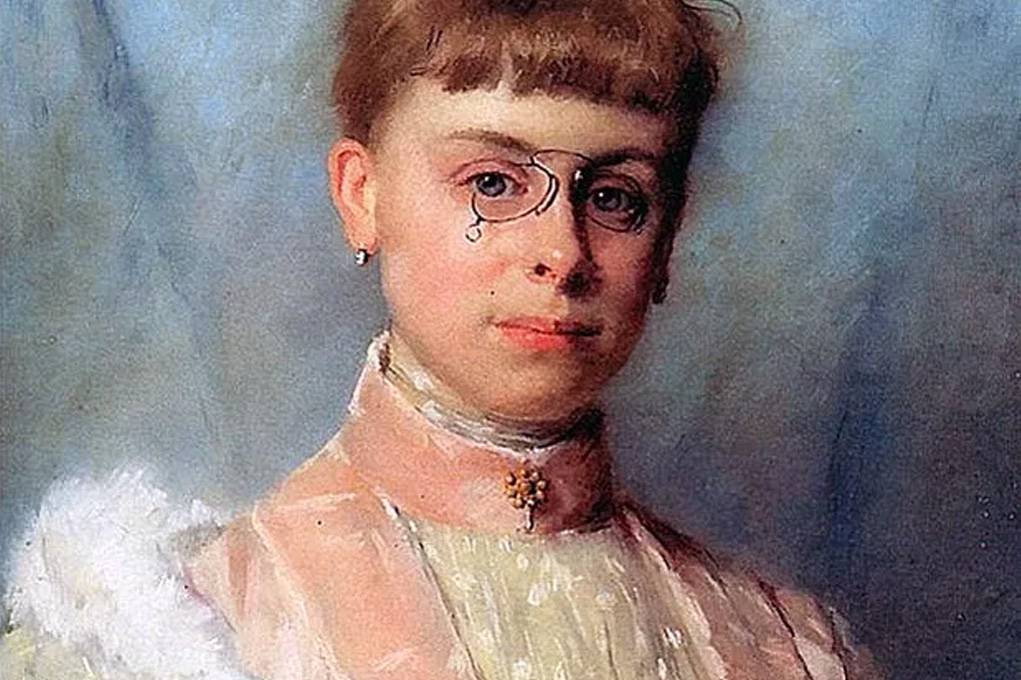
History of Rimless Reading Glasses Part 1
Rimless Readers: History and Origin
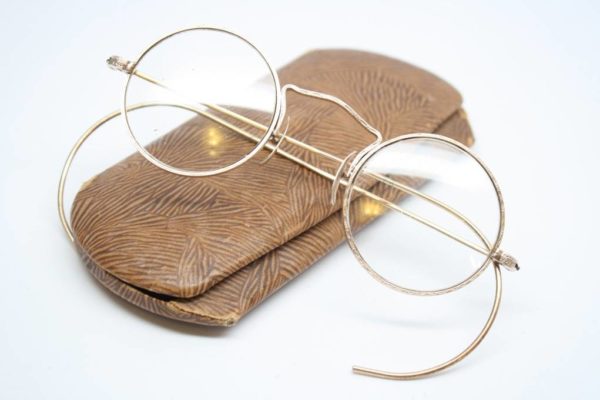
Glass containers have been filled with various levels of water to create magnification since as early as Ancient Rome. Around 1200 BCE, craftsmen in Venice, Italy worked with rock crystals to create convex shapes that improved vision. These were the first-ever reading glasses known to man. Known as “Lapides ad Legendum” or “Stones for Reading” these devices were handheld over the object to be magnified. The transition from crystals to glass occurred later in this same century and is accredited to the scholar Luigi Zecchin. This transition to round glass lenses occurred in 1284 and is considered the first invention of eyeglasses as we know them today.
The Prototypes of Rimless Readers
In the 1300’s the discovery of colorless glass paste allowed for lenses to be made much more affordable and for the first time eyeglasses were produced on a significant scale, allowing them to be traded outside of Venice. While still lacking frames at this time, these handheld glasses were starting to resemble something we are familiar with today.
It was the invention of printing in the 1400s that propelled the demand for glasses and with it the invention of frames to allow users to wear their glasses while performing other tasks. At first glasses were made just for reading, but soon tradesmen realized the benefit of magnified vision. These early frames were made with natural materials including horn, leather and a material that has turned out to be of an enduring fashion trend: tortoiseshell. The first frames were arched with a spring bridge that held them to the nose, which was found to be irritating and led to the later development of the pince-nez frames, the first rimless reading glasses.
The Advancement and Changes of Rimless Readers
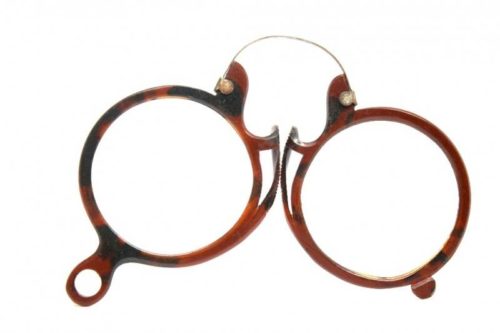
The next great achievement in eyeglasses came in what could be the birthplace of Ophthalmology. A Portuguese man named Deca de Valdes created an array of lenses at different corrective powers and was thus able to prescribe the correct amount of magnification for each eye. It is no coincidence that this was the time period referred to as “Early Modern History” as these scientific developments occurred around the world, withdrawing man from the Dark Ages.
Aesthetics and Fashion
With the advancement in lens technology and the techniques to customize frames to a greater degree, the time was ripe for not only the function of glasses to be addressed but for the aesthetic as well. In the early 1700’s Edward Scarlett, a British optician designed what was to be the first successful pair of temple glasses. These were created with not just an emphasis on industrial design but in a much more artful and creative style. They had large ornate loops at the end of the temple arms which were embossed on polished silver. Thus ushered in the age of eyewear as jewelry with not only eyeglasses but with the monocles and the lorgnette crafted in gold and silver and often adorned with precious stones. With different styles and at different price points these started to become icons of status and social class. Of course, the French took this to new heights where the bourgeoisie, in their attempt to imitate the French Court and their sophistication, deemed them an important accessory to complete any outfit.
The Evolution of Pince-Nez
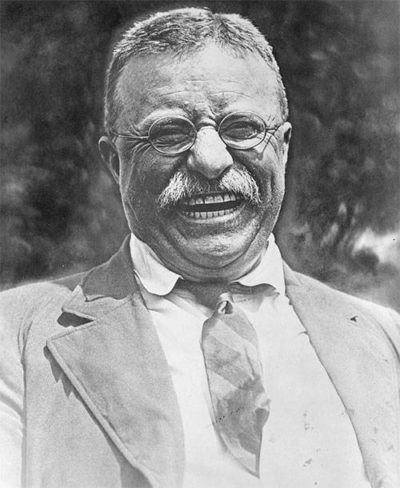
Theodore “Teddy” Roosevelt, the 26th President of the United States, was iconic for his rimless round “Pince-Nez” glasses (not to mention the beaming smile and walrus moustache).
The 1800s brought the precursor to today’s rimless reading glasses with a style known as the “pince-nez”. These consisted of oval lenses that were held together by a bridge made of metal and then sat on the nose. This was supported by a variety of methods that evolved throughout the century and in different countries. The first style used a rivet in the bridge that allowed the lenses to be squeezed onto the nose. The rivet would loosen over time rendering them unusable. This was followed by the C-bridge which was composed of a flexible piece of metal attached to the bridge that let the wearer clip the lenses to their nose. The metal pieces however would frequently break from constantly being set and removed. The next evolution of this style was the Astig design which was named for its ability to help with astigmatism. These had a sliding bar with a spring so the bridge could be expanded and contracted to fit the glasses on the face. This style also brought the attachment of nose pads, often made of cork, to the lenses that provided comfort and helped secure the glasses. The real benefit of this style was that whereas before with earlier styles the lenses could rotate slightly on the nose, and with the Astig the lenses do not rotate and can therefore correct for astigmatism in ways that the other styles could not. Towards the end of the century, a Frenchman by the name of Jules Cotted came up with a very clever style with which the wearer could pinch a pair of levers on the front of the bridge that opened the nose pads, when released they sat securely on the nose. All of these styles would often have a chain to allow the wearer to attach them to their person in case they were to slip off.
Check out part 2 of our series on the history of Rimless Reading Glasses!



